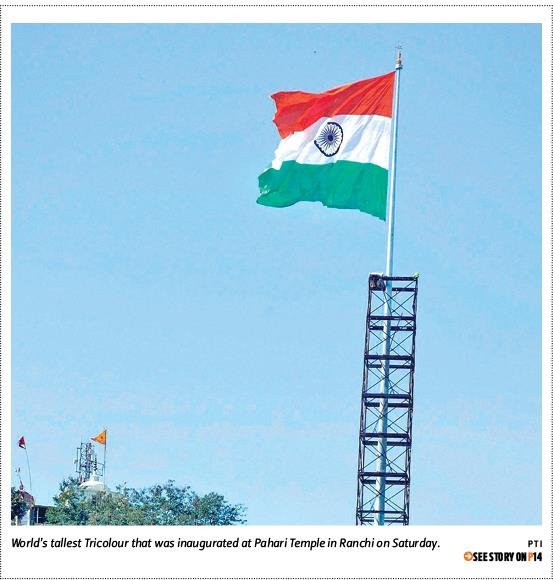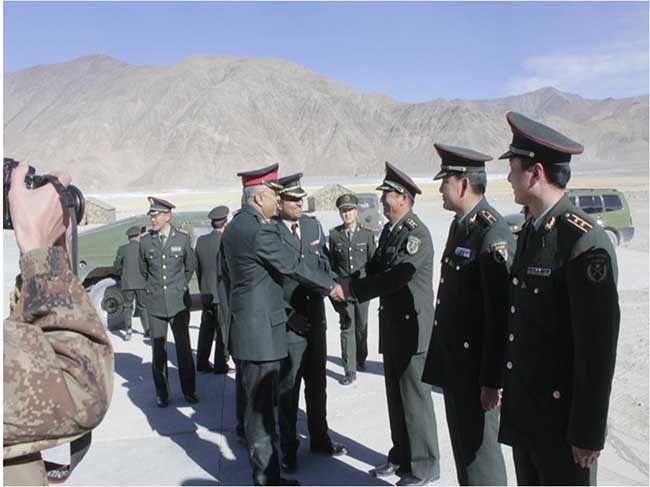Through the district pass the strategically important lone rail and road links to Jammu & Kashmir
Ajay Banerjee,Tribune News Service,New Delhi, January 2

A narrow plain (just 30-km wide) lies between the Himalayas and the international border with Pakistan. Located at the eastern edge of this plain and nestled in the foothills at an altitude of 1,090 feet is the militarily vital town of Pathankot. It is the northern-most district of Punjab that is located at the confluence of the boundaries of J&K and Himachal Pradesh.The narrow 30-km plain is clearly India’s ‘jugular vein’ — the weakest point. India’s military prowess at Pathankot and around is tasked to ensure dominance in the topography marked by fast-flowing seasonal rivulets and jungles. Through these 30 km pass the lone rail and road connection to J&K. The national highway connecting Jammu is the lone link across the Ravi, allowing military and civilian movement and so is the lone rail link that carries passengers to Udhampur and Katra. The air base at Pathankot had been attacked by the Pakistan Air Force (PAF) during the 1965 and 1971 wars. Today’s attempt by terrorists to storm the base can be counted as the third attempt to target it even though it does not match the scale of the PAF attack. “Today’s attack had the potential to cause damage to planes and helicopters at the base. Good that it was contained,” says Commodore Uday Bhaskar (retd). Besides a MiG 21 fighter jet squadron, Pathankot is home to a squadron of attack copters that fly in tandem with ground-trawling tank regiments. The base also has UAVs, air defence guns and long-distance surveillance radars. A town having 1.56 lakh population, Pathankot houses Mamun cantonment, which is used as a launching ground. The Army has a division —some 15,000 men — complete with artillery guns and tanks. It is also the base for a new division which is part of the upcoming 17 Mountain Strike. Pathankot remains top priority for the IAF which has otherwise formed a formidable ‘ring fence’ of air fields like Adampur (Jalandhar), Halwara (Ludhiana), Bathinda, Sirsa and Ambala in Haryana and Suratgarh in Rajasthan. Air Commodore Kaiser Tufail (retd) of the PAF — known as an aviation historian — writes in his blog ‘aeronaut’ about the Pakistan design to damage the Pathankot runaway. “In 1971, Pathankot was singled out for two successive raids,” he says. SN Prasad in his book ‘The India Pakistan War of 1965’, an authorised account from the Ministry of Defence archives says the PAF, on the intervening night of September 6 and 7, 1965, launched an unusual attempt to destroy IAF aircraft and airfield installations. Paratroopers of the Special Services Group were air-dropped at night near Pathankot, Halwara and Adampur. Of the 180 Pakistani commandos, 136 were taken prisoner, 22 killed and the rest managed to escape. Pak phone number used to hire taxi Pathankot: The terrorists were in regular touch with their Pakistani handlers, who even arranged a taxi for them by calling from a mobile number of that country. Sources said the terrorists had first used a Toyota Innova on Friday and it has been found that the driver was called from a Pakistan number. Security agencies are questioning the driver and trying to find out whether he had any links with terrorists or was it a case of him not recognising a Pak number. Sacked IAF technician to be quizzed New Delhi: A sacked IAF official, arrested for allegedly sharing secret information with ISI, will be interrogated, investigators told a city court which extended his police custody till Monday. Ranjith KK, a Leading Aircraftman with IAF posted at Bathinda, was dismissed recently and later arrested. He had allegedly shared secret information with intelligence operatives suspected to be backed by ISI after being “honeytrapped” into an espionage racket.
Gujarat on high alert
Ahmedabad: The Gujarat Police have issued an alert and the security personnel have been told to take necessary steps to keep a check on suspicious activities in the wake of the terror attack in Punjab. “In the wake of today’s terror attack in Punjab, I have asked the police department and respective heads to remain alert. Based on some inputs available with us, I have ordered the police force to take all necessary steps and increase vigil across the state,” said PC Thakur, DGP.
Parrikar meets NSA
- Defence Minister Manohar Parrikar on Saturday chaired a high-level meeting during which he was briefed in detail by National Security Adviser Ajit Doval on the terror attack.
- It was attended by the three service chiefs and the Defence Secretary. The meeting lasted 90 minutes during which Parrikar was given a detailed overview about the intelligence received and the action taken.
- The meeting focussed on the intelligence inputs received and the counter measures taken by the armed forces, including deployment of the NSG commandos, personnel of the special forces belonging to the Army and the IAF, besides regular soldiers.





























































































